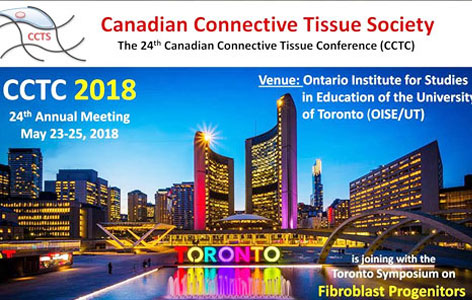
By: Shabana Amanda Ali, ORT Times Science Writer and UHN Trainee
Do you know someone with cancer or arthritis? With lung disease or liver disease? What about kidney disease? If you answered yes to any of these questions, then you know someone who is affected by fibrosis. Put simply, fibrosis is thickening or scarring of tissue. Put not so simply, fibrosis is the sustained production of cytokines or other factors that disrupt tissue homeostasis through excessive accumulation of extracellular matrix (Ho, Lagares, Tager, & Kapoor 2014). Disruption of homeostasis can’t be a good thing (maybe fibrosis is a foe). Yet some aspects of fibrosis are essential for the normal repair of tissues in response to injury (maybe fibrosis is a friend).
Ultimately, fibrosis is an adaptive process to repair injured tissues (friend), but fibrotic tissue may not restore function to the damaged organ (foe). When fibrosis goes awry and is unstoppable—because feed-forward mechanisms perpetuate the fibrotic process—normal organ functioning becomes compromised and disease ensues (Ho et al., 2014). Currently, very few therapies target the fibrotic process, none of which can reverse the damage once done. So what does a UHN scientist do? Look for solutions of course. Dr. Mohit Kapoor, a Senior Scientist at the Krembil Research Institute, and his colleagues identified a novel molecular mechanism through which fibrosis occurs and new mediators that could be targeted in the treatment of fibrotic diseases (Lagares et al., 2017). Their exciting findings were recently published in Nature Medicine.
The researchers discovered that a soluble form of a protein known as ephrin-B2 promotes fibrosis in the lung and skin (Lagares et al., 2017). Using a variety of techniques and experimental models, they demonstrated that ephrin-B2 is shed by the cells after injury and binds to specific receptors to activate signaling leading to fibrosis. What causes ephrin-B2 to be shed? A protease known as ADAM10. In fact, when ADAM10 activity is blocked using a drug, ephrin-B2 shedding is reduced—and so is fibrosis (Lagares et al., 2017).
If this story interests you and you want to learn more, you’re in luck. The lead author of this paper, Dr. David Lagares, will be presenting his work at the 24th Annual Canadian Connective Tissue Conference (CCTC), happening in Toronto from May 23rd to 25th. Chaired this year by Drs. Mohit Kapoor and Saeid Amini Nik, CCTC is a forum for advancing the scientific and clinical understanding of connective tissue biology in health and disease. While connective tissue is the focus, participants can expect to hear about a wide range of topics including biomaterials; bone, cartilage and tooth development; computational biology and artificial intelligence; stem cells in tissue regeneration; extracellular matrix (and fibrosis!); tissue engineering; genetics; high-throughput screening; and more.
CCTC is a conference geared towards trainees. It offers opportunities for poster and podium presentations, the best of which will be awarded prizes. Abstract submission is now open and will remain so until March 8th. Participants who register before April 10th will pay reduced registration fees. Given that CCTC immediately precedes the Toronto Symposium on Fibroblast Progenitors in Health and Diseaseon May 25th to 26th, you can come for CCTC and stay for the Symposium. Attending both events will help you decide for yourself whether fibrosis is indeed friend or foe.
References:
1. Ho, Y. Y., Lagares, D., Tager, A. M., & Kapoor, M. (2014). Fibrosis--a lethal component of systemic sclerosis. Nat Rev Rheumatol, 10(7), 390-402. doi:10.1038/nrrheum.2014.53
2. Lagares, D., Ghassemi-Kakroodi, P., Tremblay, C., Santos, A., Probst, C. K., Franklin, A., . . . Kapoor, M. (2017). ADAM10-mediated ephrin-B2 shedding promotes myofibroblast activation and organ fibrosis. Nat Med, 23(12), 1405-1415. doi:10.1038/nm.4419




